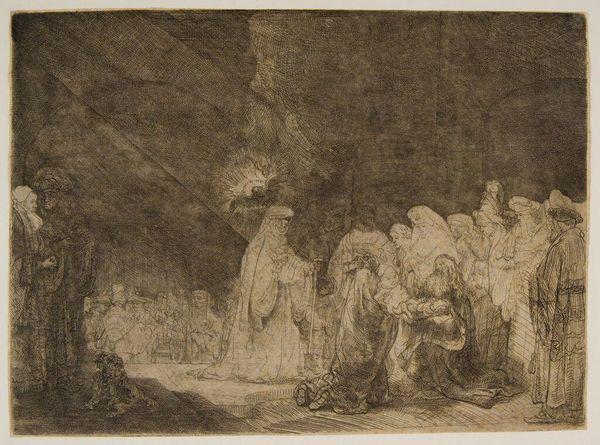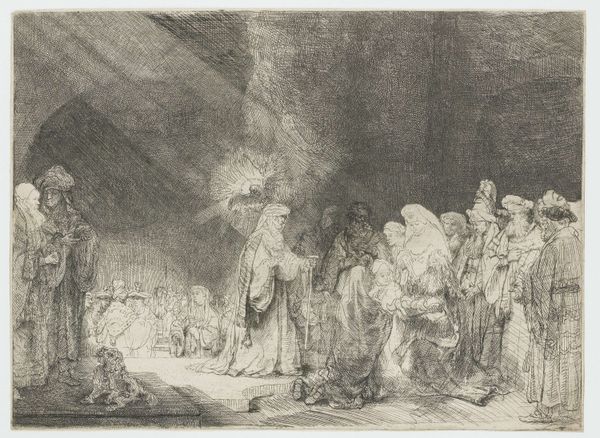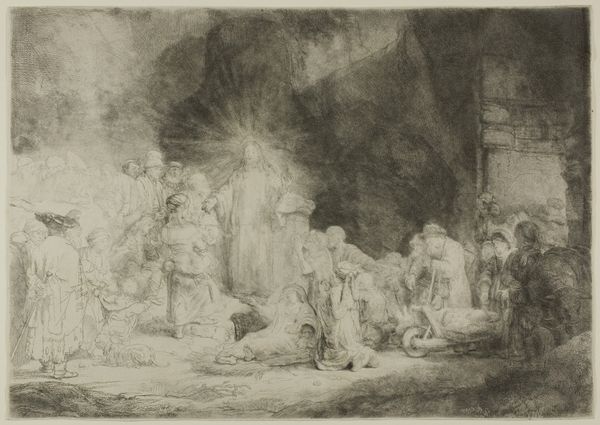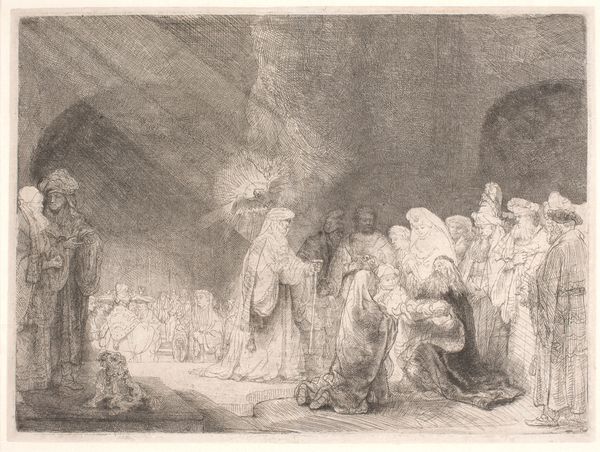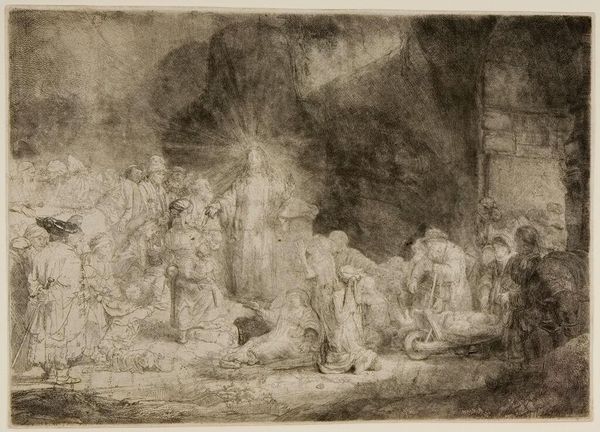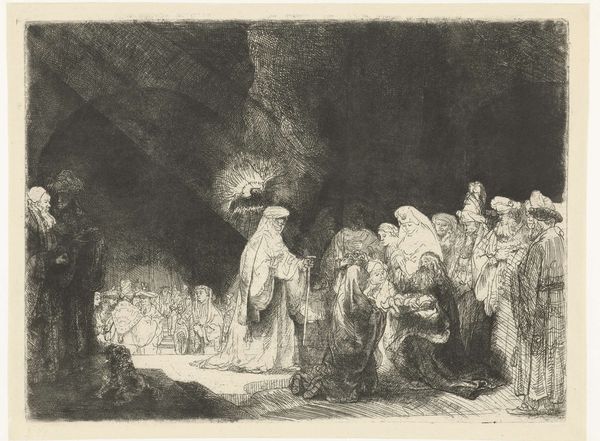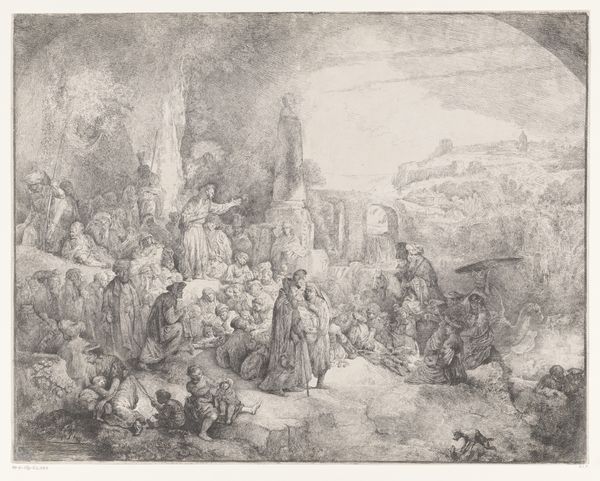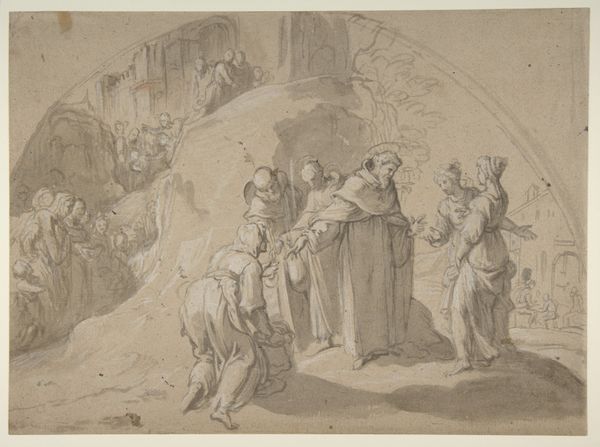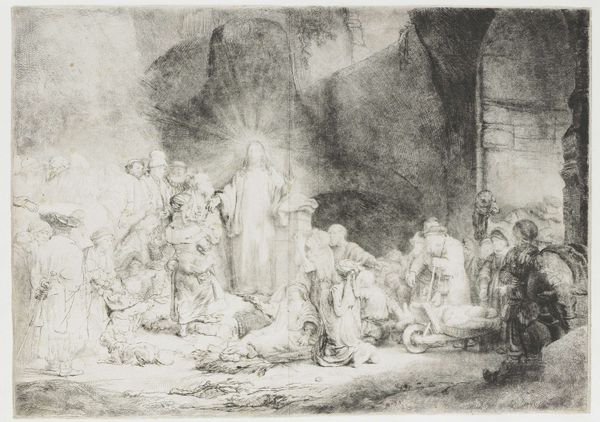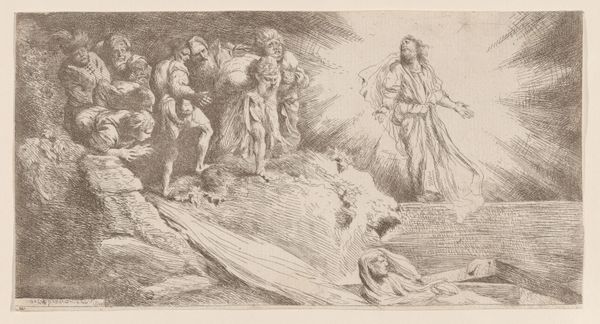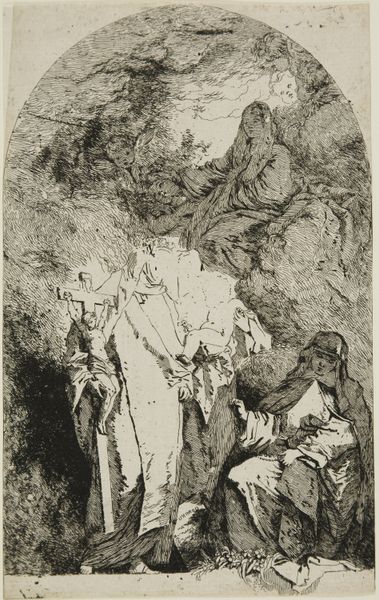
print, etching
#
baroque
#
dutch-golden-age
# print
#
etching
#
figuration
#
history-painting
Dimensions: height 213 mm, width 288 mm
Copyright: Rijks Museum: Open Domain
Editor: Here we have Rembrandt van Rijn's etching, "The Presentation in the Temple," from around 1640. The oblong print depicts a biblical scene with delicate lines and hatching that feels almost dreamlike. There is something truly magical and reverential in how Rembrandt uses light. What draws your eye when you look at this? Curator: The light, oh yes, you've nailed it! It’s not just light; it's almost a character itself. Notice how it doesn't just illuminate but seems to emanate from the child, softly bathing the scene. The whole temple practically breathes with Rembrandt’s spiritual interpretation of the story. What feelings rise up as *you* dwell in it? Editor: Humility, definitely. The kneeling figures and the temple setting contribute to the solemn mood, almost making the viewer feel like they're intruding on a sacred moment. Can you speak a bit more about Rembrandt’s technique here? Curator: He achieves that by using the etching process to mimic the texture of light, varying his strokes, aren't you captured? It’s also about what he leaves unsaid; his suggestion rather than statement of form. Do you see how he orchestrates our eye? It moves across the print's surface from shadow to light – from our earthly plane to this sacred moment of unveiling and encounter with divinity. A rather amazing stagecraft, don't you agree? Editor: It's incredible. I hadn’t noticed how strategic his composition was in guiding the viewer through the story. This reminds me of his dramatic lighting style in painting. Curator: Precisely! And Rembrandt translated so much nuance into etching—I believe because for him, it was a private ritual. His lines carry emotion, uncertainty, like sketching a memory – rather than stating a belief. Isn't it a joy to feel how the art communicates the artist's personal searching? Editor: It's a joy indeed. This makes me see etching as less of a reproductive medium and more like an extension of the artist's inner thoughts. Thanks so much for your time. Curator: The pleasure was all mine. I see this artwork – like you - as a humble window through which to glimpse and understand one another.
Comments
No comments
Be the first to comment and join the conversation on the ultimate creative platform.

